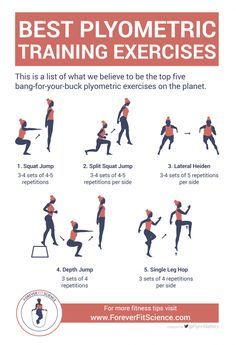Olympic weightlifting is a highly demanding sport that requires explosive power, speed, and strength. Athletes participating in this discipline constantly look for ways to improve their performance and reach new heights in their career. One training method that has gained recognition in recent years for its effectiveness is plyometrics.
What are Plyometrics?
Plyometrics, also known as jump training or reactive training, is a training method that aims to enhance an athlete’s power output by improving their ability to rapidly contract and utilize muscles. It involves quick and explosive movements that utilize the stretch-shortening cycle (SSC) to generate maximal force in a minimal amount of time.
The SSC is a neuromuscular phenomenon that occurs when a muscle-tendon unit is rapidly stretched, followed immediately by a concentric contraction. This sequence allows for a more efficient use of stored elastic energy within the muscle, resulting in a greater force output.
Plyometrics for Olympic Weightlifting
Olympic weightlifting involves two main lifts: the snatch and the clean and jerk. Both of these lifts require a significant amount of power and explosiveness to execute successfully. Incorporating plyometric training into an athlete’s weightlifting program can help improve their performance in these lifts by:
Enhancing power output: Plyometrics develop the fast-twitch muscle fibers responsible for producing explosive power. This directly translates to an athlete’s ability to generate force during the snatch and clean and jerk.
Improving rate of force development: The rapid and forceful contractions involved in plyometric exercises train the nervous system to recruit more motor units and increase the rate at which force is produced. This is crucial for the rapid acceleration phases of the Olympic lifts.
Increasing stability and balance: Plyometric exercises challenge an athlete’s stability and proprioception, improving their ability to maintain proper form and control during the dynamic movements of weightlifting.
Preventing injuries: Plyometric training strengthens the tendons, ligaments, and muscles involved in weightlifting. This reduces the risk of common weightlifting injuries such as sprains, strains, and tears.
Incorporating Plyometrics into the Training Program
When incorporating plyometrics into an Olympic weightlifting training program, it is essential to consider a few important factors:
Gradual Progression: Plyometric exercises should be introduced gradually to allow the athlete’s body to adapt to the demands of the training. Start with basic exercises and gradually progress to more advanced variations.
Appropriate Volume and Intensity: Plyometric training is intense and places significant stress on the body. It is crucial to find the right balance between volume (number of repetitions) and intensity (level of effort) to prevent overtraining and minimize the risk of injury.
Specificity: Select plyometric exercises that closely mimic the movements of the snatch and clean and jerk. This will ensure that the training has a direct transfer to the athlete’s performance in these lifts.
Proper Technique: It is important to master the proper technique of each plyometric exercise before progressing to more advanced variations. This will help ensure maximal effectiveness and minimize the risk of injury.
Sample Plyometric Exercises for Weightlifters
Here are some examples of plyometric exercises that can be incorporated into an Olympic weightlifting training program:
Depth Jumps
Stand on a box or elevated surface, step off, and immediately upon landing, jump vertically as high as possible. This exercise trains the stretch-shortening cycle and helps develop explosive power.
Medicine Ball Throws
Perform explosive throws with a medicine ball in various directions, such as overhead throws, lateral throws, and chest passes. This exercise enhances power output and engages multiple muscle groups.
Box Jumps
Jump onto a box or elevated surface from a standing position. This exercise improves vertical leap, power, and coordination.
Broad Jumps
From a standing position, jump forward as far as possible. This exercise enhances power, speed, and horizontal explosiveness.
Single-Leg Hops
Perform consecutive hops on a single leg, aiming for maximal distance or height. This exercise improves stability, balance, and explosive power.
Conclusion
Plyometric training is a valuable addition to any Olympic weightlifter’s training program. Its ability to enhance power output, rate of force development, stability, and injury prevention makes it an effective method for improving performance in the snatch and clean and jerk. By incorporating carefully selected plyometric exercises and following proper programming guidelines, weightlifters can optimize their training and reap the benefits of this dynamic training method.
